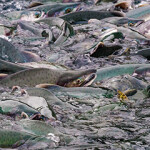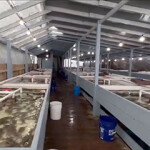Russia to investigate viability of Arctic, Antarctic fisheries in 2020

Russian research institutes are planning 280 different expeditions to study seafood stocks, including trips to the Arctic and Antarctic.
The lion’s share of the expeditions – 110 in all – relate to the Far Eastern Fishery basin, where most of the Russia’s national catch comes from.
The Russian Research Institute of Fisheries and Oceanography (VINRO) said it will conduct a bethic trawling survey to evaluate fish, shrimp, and crab stocks in the Bering Sea, the first Russian research trip to the area in more than 60 years. VINRO said it will explore the entire basin in Russia-controlled areas, and will also conduct surveys of the continental margins to assess stocks of pollock, cod, crab, shrimp, squid, grenadier, and halibut. And VINRO will conduct trawling-acoustic surveys and pelagic surveys “to better understand the stock of whitebait of Pacific salmon,” it said.
The Northern fishery basin will see 52 expeditions, including trawling acoustic survey of biomass of demersal species in the northern seas. Two scientific vessels, “Vilnius” and “Professor Levanidov,” will take part in a joint Russia-Norway expedition in the Barents Sea and the adjoining waters of the Arctic Ocean.
Twent-two expeditions will be conducted in the Western fishery basin, with the most notable of them heading to Antarctica, with a focus on the assessment of stock of Antarctic krill, a species Russian scientists and fishery authorities consider commercially attractive.
And The Caspian anchovy expedition will see trawling acoustic and hydrographical surveys to evaluate stocks of the species and help design new methods to fish it.
The coming year will see a nearly identical number of research expeditions as 2019, which brought interesting discoveries, including a discovery that the Chukchi Sea held promisingly large stocks of pollock and opilio crab, where neither had been seen previously in great numbers.
Ilya Shestakov, the head of the Russian Federal Agency for Fisheries, said in April that the Russian scientific fishery fleet will receive 10 new vessels in coming years. Currently, the fleet has 18 vessels with an average age of 26 years, but the useful lifetime of the active research vessels be reached within five years, according to the agency’s estimations.
Photo courtesy of International Gulf of Alaska Expedition






Share